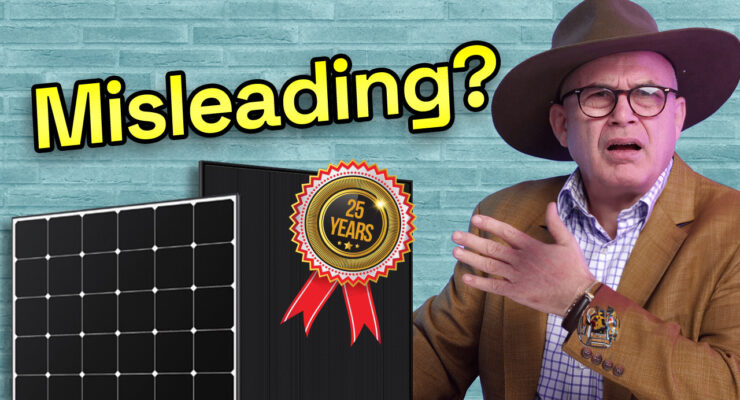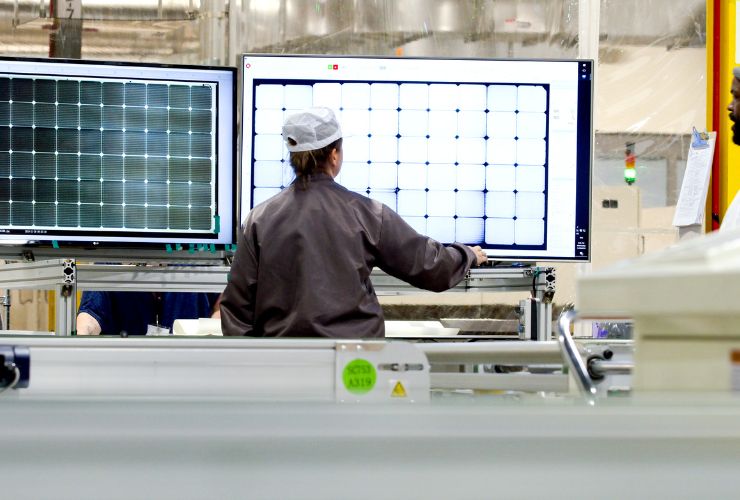
Fast read
Both a product warranty for the actual product and a performance warranty for the panels' declining electricity output are included with solar panels. The panel may not last for the whole performance warranty as the product warranty is usually shorter.
The owner must demonstrate that the panel's performance has declined below the claimed level, which can be expensive. As a result, the performance warranty is frequently challenging to assert.
The fact that the performance warranty is not genuine and that different manufacturers may have additional terms also makes it deceptive. In general, the product warranty is the warranty that buyers of solar panels should pay the most attention to.
The Performance warranty on solar panels is next to useless
All Solar panels come with a standard product warranty that covers the product and a performance warranty that covers the deterioration in electricity output by the panels.
The product warranty for most panels is 12, 15, or 25 years, while the performance warranty is usually for 25 years. But this does not mean that a panel with a 12-year product warranty and a 25-year performance warranty would be expected to last 25 years.
If such a panel is completely dead at year 13 and one would call the manufacturer to claim the 25-year performance warranty as the panel has no performance, one would be told something like: “To claim the performance warranty, the panel still has to show performance. If the product is completely dead, then it’s a product warranty claim, and that one has run out. Sorry – but bad luck.”
The Product warranty is the real warranty
We stand by the belief that the product warranty holds true value, whereas the performance warranty, often misleading, shouldn’t rightfully be termed as a warranty.
When one travels back, the solar panel performance warranty starts as a performance guide. Then over 20 years ago, some clever marketing person decided to call it a performance warranty.
Cheap solar salespeople often confuse the performance warranty with the shorter product warranty. They do this to deceive unsuspecting customers and make them believe in the quality of the product.

What is the Performance warranty?
Solar panels deteriorate every year to some degree. A bit like a rubber seal on your roof, it slowly gets harder and harder, eventually becoming brittle because of heat and exposure to the elements.
The solar cells in a solar module operate similarly, whereby their capacity to generate electricity slowly deteriorates. Usually, the deterioration is the highest in the 1st year, which could be between 1.5 % to 3% of the capable output.
For example, a 400-watt panel with a 2% 1st year degradation factor will lose 8-watt capacity in the 1st year and then produce electricity as if it is now a 392W panel. After the 1st year, the annual degradation will slow to a steady and ongoing 0.2 and 0.5% of output for most panels.
This translates to a specific example: after 25 years, considering an annual degradation of 0.3% and an initial degradation of 2% in the first year, the panel would have diminished by 11.6% of its capacity. Even so, it remains under warranty to produce 88.4% of its initial capacity. This will see a 400-watt power class module grow the output equivalent to a 353.6-watt panel after 25 years.
What is the issue with the Performance warranty?
The problem is that you, as an everyday person with limited panel-level monitoring equipment, will not easily be able to prove to a sophisticated and well-financed solar panel manufacturer that the panel has dipped below the warranted wattage.
Under the solar warranty conditions, it is up to the solar power system owner to prove that there is an issue with the panel. If there is no visual hot spot, microcracks, or delamination on the panel, then the only way to prove an issue is a flash test in an accredited laboratory – like PV labs in Canberra.
Sadly, the expense of professionally testing a panel or row of panels to confirm the issue is higher than it is worth.
The cost of removing and packing each panel is at least $150. Then, the panel needs to be sent to a testing lab, which costs a minimum of $300. The testing itself costs at least $500.
Removing and packing each panel costs at least $150. After that, the panel must be sent to a testing lab, which has a minimum cost of $300. The testing itself costs at least $500.
In addition, there are expenses for arguing with the solar manufacturer and shipping the panels back, which amount to $300. When all these expenses are added, the minimum total is $1,250. All these expenses add to a minimum total of $1,250.
Is it worth it?
All this effort is for an underperforming second-hand panel that one could notice on eBay or Facebook marketplace for less than $120. Testing the panel will cost you much more than the value of the panel, so it’s just not worth it.
The cheap solar salesperson often fails to explain this reality to the customer. As a result, many customers believe they have a strong 25-year performance warranty for a cheap panel, only to realise later that it won’t deliver as expected.

The performance warranty is misleading
We here at Your Energy Answers believe that the performance warranty is misleading. The government should ask the panel manufacturers to call it a Performance Guide instead.
Absolutely, don’t fall for the misleading 25-year performance warranty stickers plastered across cheap solar marketing materials.
In my time with a quality solar panel manufacturer, I sold, distributed, and sometimes installed over 1 million solar panels in Australia. However, I’ve never witnessed anyone successfully claiming the performance warranty, not even once.
Therefore, I suggest ignoring it because we should not label it as a warranty.


